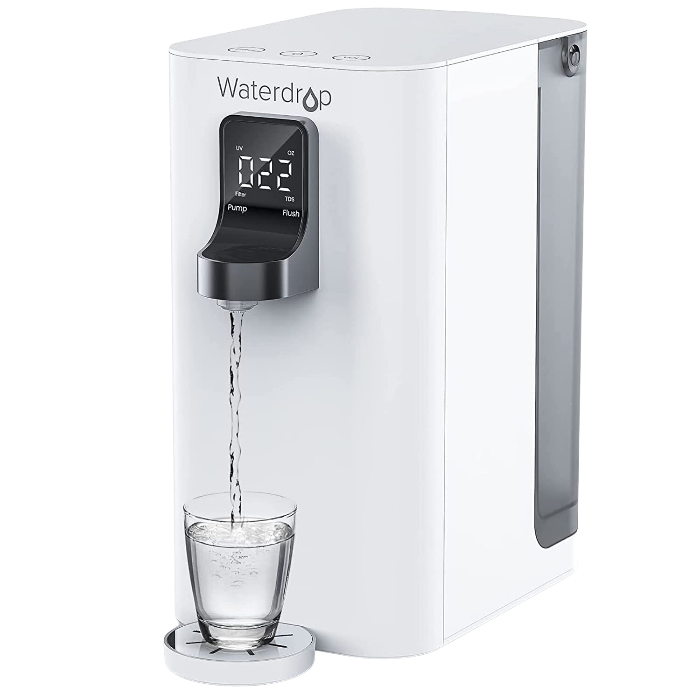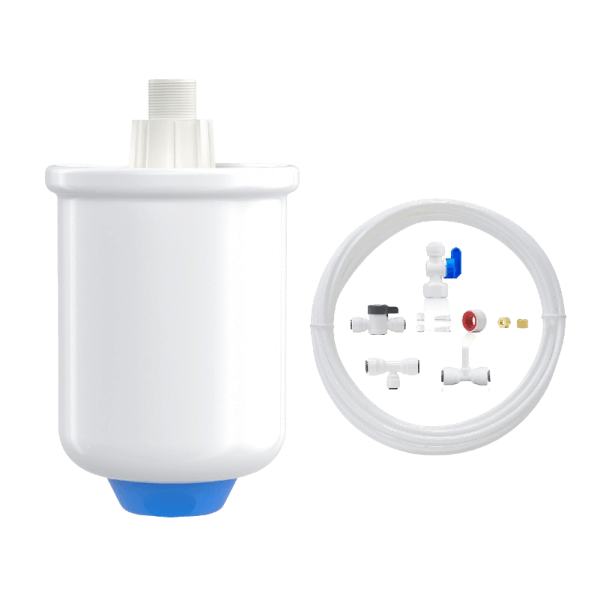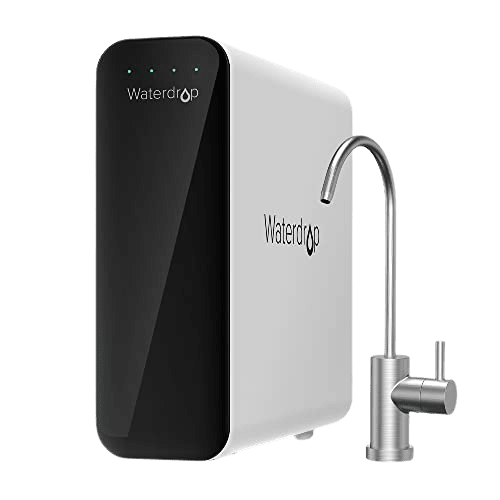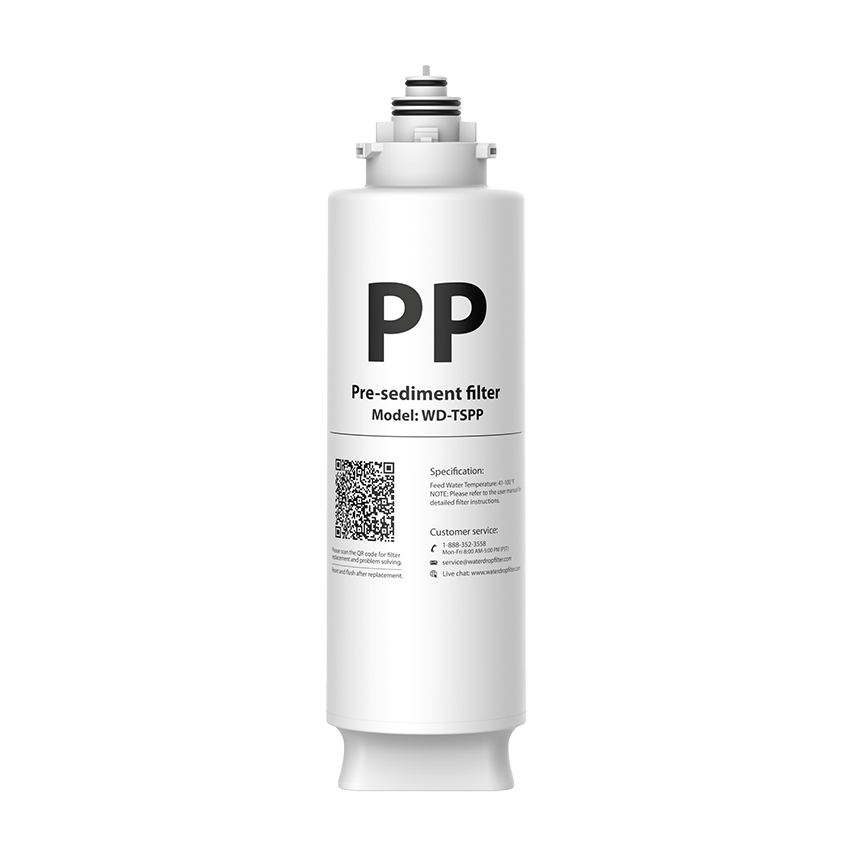How to Remineralize Reverse Osmosis Water?
by Dr. Jonathan Doyle - Updated April 17, 2023
Reverse osmosis is an advanced water filtration technology with increasing popularity in today’s market. It has
a precise 0.0001-micron filtration capacity, which means it can effectively remove almost all the impurities in
your drinking water. It delivers pure filtered water comprising only water molecules and no contaminants.
If you are looking for an effective purification solution for your water, you should strongly consider a reverse
osmosis water filter, especially in regions with poor water quality.
The Operation Process of Reverse Osmosis Water Filter System
Now that you have decided to choose a reverse osmosis water filter system to provide clean filtered water for
your household, the next step is understanding how it works. These filter systems are equipped with advanced RO
membranes that provide superior filtration performance always.
RO filters rely on the reverse osmosis process to carry out effective filtration. As the name suggests, reverse
osmosis is the opposite of the traditional osmosis process. While osmosis happens naturally due to the movement
of a solvent from a region of high concentration to a region of low concentration while passing through a
permeable membrane, reverse osmosis is a forced process where the solvent molecules are pushed from a
low-concentration region to a high-concentration region under hydrostatic pressure.

When the solvent (contaminated water) passes through the RO membrane, the membrane separates it into water
molecules and other molecules. The other molecules are larger than the 0.0001-micron pore size of the RO
membrane, which makes it impossible for them to pass through. These other molecules include bacteria and other
contaminants in your tap water. However, it also includes beneficial materials like salts and minerals. That is
why the filtered water from RO systems does not contain the minerals originally present in tap water.
Click to learn more about Does Reverse Osmosis Remove Bacteria and Viruses?
Essential Minerals in Drinking Water
The human body requires essential minerals and trace elements to function
optimally. The body absorbs these minerals from water, performing various functions in different body parts. For
instance, these minerals contribute to the overall immunity of the body, and they include;
Calcium
Calcium is an essential mineral in drinking water, but calcium-containing water is unfit for cleaning and
washing. When present in water, calcium contributes significantly to the formation and structural development of
teeth and bones. It helps to prevent major illnesses in the human body, such as hypertension, kidney stones, and
stroke. Calcium also prevents blood clotting and muscle contraction when present at optimum levels in the body.

Magnesium
Magnesium is also an important element in the body. It shields the body against heart problems and other
critical illnesses. Magnesium is important for many processes in the body, including regulating muscle and nerve
function, blood sugar levels, and blood pressure and making protein, bone, and DNA. However, only a few
Americans consume adequate magnesium levels in their diet.
Sodium
There are two sides to sodium as an essential element. First, the human body requires sodium, but only at the
recommended daily intake amount. Second, too much sodium in the body leads to a wide range of health risks,
including high blood pressure.
Fluoride
Fluoride is present naturally in water in some areas. Alternatively, it is added to water artificially to
prevent tooth decay in humans. There are growing health risks associated with consuming too much fluoride. But
these claims are only prominent in areas with extremely high fluoride consumption, and none has been
scientifically proven.
Iron
The role of iron in the body includes the transport of oxygen in the bloodstream. Interestingly, when the iron
level in the water rises beyond 0.3 mg/l, it causes red, yellow, or brown stains in dishes, glassware, laundry,
and household fixtures like sinks and bathtubs. Iron deficiency is a prevalent disorder associated with
nutrition globally. It is also the leading cause of anemia in pregnancy, childhood, and infancy.

Copper
Copper is present in low amounts in natural water bodies. It is an essential trace element required by the body
to perform optimally. An average adult needs about 2-3 mg of copper daily to stay healthy. It plays a vital role
in bone strength, defense mechanisms, infant growth, and more.
What Are the Benefits of Mineral Water?
Although filtered water from reverse osmosis systems contains no toxic elements, it also lacks the essential
minerals listed above.
It is vital for optimal body function. Remineralizing your RO water can restore the lost essential elements
during reverse osmosis filtration without adding impurities. Mineralized water contains major micronutrients,
including calcium, magnesium, and other trace minerals. Calcium contributes to stronger teeth and bones, while
magnesium is a co-factor and activator for over 300 enzymatic reactions in the body. The muscles and nerves in
the body also require sodium to function effectively.
Click here to learn the benefits of mineral water.
It has an improved flavor. Most water drinkers can differentiate between the taste of reverse osmosis water and
other types of water. This is due to the fact that RO water tastes unpleasant and bland. Conversely, the
alkaline water with re-added minerals retains an improved and great taste. It also helps to overcome the craving
for soda or juice.

It encourages people to drink more water. Drinking more water helps keep the body hydrated and reduces the
frequency of thirst—the electrolytes in mineralized water help to quench thirst better and faster than regular
filtered water. The flat and bland taste of RO water is due to its neutral pH, while the better taste of the
remineralized water is due to its alkaline pH. The latter is perfect for drinking, cooking, and making tea,
coffee, and other beverages. You are also more likely to drink more water if the taste is great, and the more
water you drink, the more hydrated you are.
How Do You Remineralize Reverse Osmosis Water?
The absence of the necessary microelements in RO water does not mean we should stop drinking it. The RO
filtration process removes harmful contaminants like bacteria, viruses, and heavy metals from tap water. If you
eat a strictly balanced diet and drink sufficient electrolytes after exercise, you wouldn’t have a problem.
However, if you cannot supplement these micronutrients through a balanced diet and consumption of electrolytes,
you may consider other ways to remineralize your RO drinking water.

The easiest option to enjoy the benefits of mineralized water without missing out on effective RO filtration is
to adopt a RO system with a remineralization filter. Unlike the regular RO water filters with three filtration
stages, these models have an additional post-activated carbon filter or a remineralization filter that re-adds
the minerals into the water and ensures a balanced pH.
Waterdrop G3P800 under-sink reverse osmosis system combines a robust 3-stage filtration process and a scale
inhibitor to deliver premium filtered water with zero water scale accumulation. The remineralization filter can
re-add 18 different natural materials to your drinking water. Drinking this filtered water extensively prevents
chronic diseases and improves digestion and immunity.
Click to check the real customer review of Waterdrop G3P800 from Jason:
https://www.trustpilot.com/reviews/63972cdeeb0ad848990852f3.
The Waterdrop G3 RO system has passed over 400 chemical lab tests to confirm the absence of harmful chemical
substances in its components. It is certified against NSF 58 for TDS reduction and NSF 372 certified for
lead-free material. The remineralization filter adopts an innovative technique to re-add natural materials.
Add an Extra Remineralization Water Filter
For homeowners with an existing RO system, you can introduce a separate remineralize water filter that completes
the mineralization job perfectly. Waterdrop offers a remineralization filter compatible with most reverse
osmosis water systems and undersink water filtration systems.
The filter is designed to restore 18 natural minerals, including calcium, magnesium, sodium and others. The
remineralized water from this filter can do much good for your body. What’s more, you can save 8300 single-used
bottles and $12600 spent on bottled mineral water.
To Round Up
Drinking water with an adequate amount of minerals is necessary for humans to stay healthy. Such water also
tastes better and is crispy. While this is not a call to abandon your RO water filtration systems, you should
consider the addition of a separate remineralization water filter to your existing setup. That way, you can
always get safe, filtered, mineralized water for drinking and cooking.












